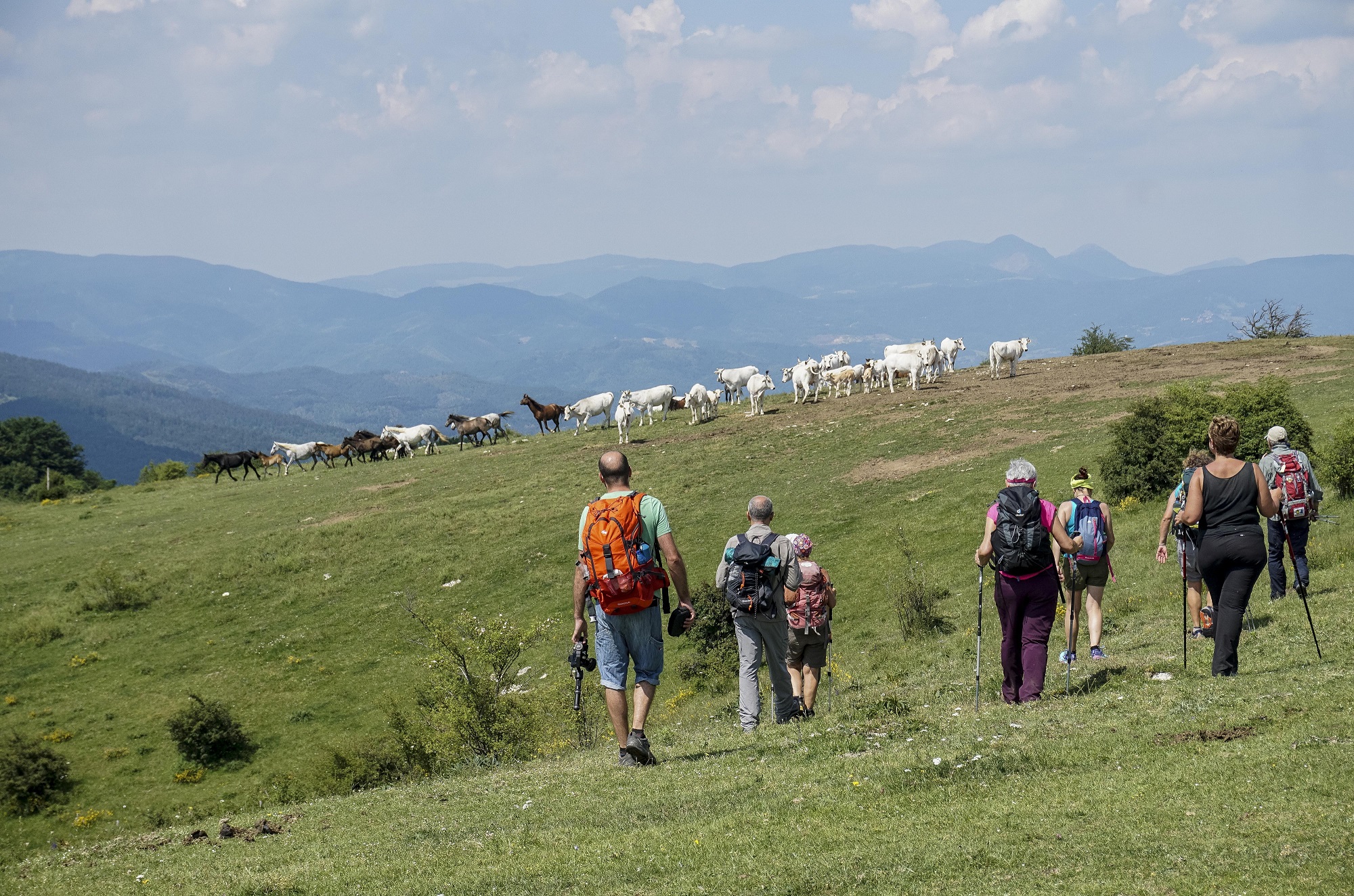5 Trails you may not know
From eXtraBO Outdoor Infopoint
Thanks to the several regional parks and oases spread across the Metropolitan City of Bologna, trekking and "walking" activities have become one of the territory's main attractions. But do we really know all the many routes to take? After having certainly heard about, or walked along, the Via degli Dei, which takes thousands of people from Bologna to Florence on foot every year, we are now going to discover other wonderful trails ready to be unveiled.
With a total of 7 stages and 102 km, the Via dei Gessi e dei Calanchi connects Bologna and Faenza after crossing two regional parks (Parco Regionale dei Gessi Bolognesi and Parco Regionale della Vena del Gesso Romagnola).
The walker will discover the naturalistic peculiarities of the territory together with the splendid towns he will meet along the way. The route, indeed, runs through the district of the Vena del Gesso, crossing areas rich in ravine formations, karst phenomena and chalk outcrops that make up the surrounding landscape. In addition, by visiting Dozza and Brisighella, two of the most beautiful villages in Italy, as well as Borgo Tossignano, Settefonti, Borgo Rivola and Zattaglia, one also undertakes a marvelous journey through the history of this rich territory.
https://www.laviadeigessiedeicalanchi.it/
The Way of St. Anthony retraces the life of the Saint from Camposanpiero (PD) to the sanctuary of Verna (AR) in 22 stages (408 km), passing through the cities of Padua, Rovigo, Ferrara and Malalbergo in the Bologna area. From here the trail follows the route of the historic Navile Canal and its imposing hydraulic supports that regulate the water flow in the countryside of the "Bolognese Lowlands" and the Wetlands of La Rizza, where you can admire the storks repopulating the area and the nearby village of Bentivoglio with its stately castle. Continuing on to Bologna, the route heads along the Apennine ridge towards the natural beauty of the Parco Regionale dei Gessi Bolognesi e Calanchi dell'Abbadessa, the Vena del Gesso Romagnola and the Foreste Casentinesi.
http://www.ilcamminodisantantonio.org/ita/pagina.asp?id=121
The Via della Lana e della Seta (Wool and Silk Road) connects Emilia Romagna and Tuscany, with a 130 km route between the cities of Bologna and Prato. It starts in the heart of Bologna, following the canals up to the majestic Chiusa di Casalecchio (the oldest working waterworks in Europe, a UNESCO World Heritage Site), and ends at the Cavalciotto di Santa Lucia di Prato, acting as a dam for the Bisenzio river. Between these two important works of industrial archaeology we are going to discover wonderful medieval villages, churches and castles, immersed in the still unspoilt nature of the Tuscan-Emilian Apennines. Unmissable destinations are the Abbey of Montepiano (Vernio), the Fortress of Cerbaia (overlooking the Bisenzio Valley) and the wild views of the Calvana massif, where wild horses graze undisturbed.
https://www.viadellalanaedellaseta.com/

The Apennines are also known as a land of deep devotion, as evidenced by the numerous Marian shrines that enrich the artistic and architectural heritage of our mountains. The Via Mater Dei (157 km, to be covered in 7 days) leads walkers to the discovery of important places of worship, such as the Sanctuary of Boccadirio or the Church of Santa Caterina di Montovolo, all set among woods and hills. A young and still little-visited route, perfect for those seeking an excellent combination of trekking and spirituality in the cool setting of the Bolognese mountains.
The Fantini Way (Via del Fantini) is dedicated to the famous "Apennine researcher", Luigi Fantini, whose complex geological and historical studies on the Zena Valley have made one of the most important contributions in the field. The Trail touches on all the most important stages linked to Fantini's discoveries, starting from the Dolina della Spipola (and the homonymous cave) to the Grotta del Farneto, over the very special Botroid Museum in Tazzola and the wonderful panorama of Monte delle Formiche. Another must-see of the Via is the archaeological area of Monte Bibele, a quiet place rich in history bearing visible signs of the ancient Etruscan-Celtic settlement that once stood here.
https://www.parcomusealedellavaldizena.it/la-via-del-fantini/